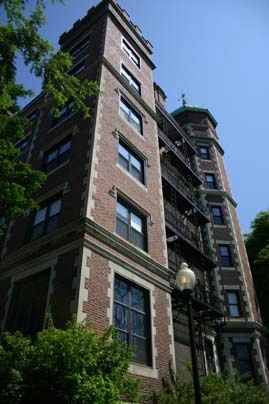W1, one of MIT's oldest and most cherished buildings, will be given new life under a major renovation plan announced this month, and students, faculty and staff will play key roles in shaping its future.
Also known as Ashdown House after a popular former housemaster, W1 is MIT's oldest graduate residence hall and arguably the cultural center of the Institute's graduate community. Its dining room has been a focal point of the MIT graduate experience, serving as a meeting place for faculty and their students.
With the scheduled opening of the new NW35 graduate residence hall next summer, administrators had been hoping to turn W1 into an undergraduate residence as early as the fall of 2008. But they have come to realize that W1 needs a major renovation, and the plan to bring the residence hall back into service has been pushed back by two years.
The delay, however, has presented a classic opportunity for MIT to do what it does best: collaborate as a group to solve a problem.
To that end, MIT has named Suzanne Flynn, professor of linguistics and language acquisition, and her husband, Jack Carroll, housemasters of the soon-to-be-renovated W1, and the pair have begun recruiting students to join a founders group that will design the building's community.
MIT has used the founders group concept for work on Simmons, the Warehouse and Sidney-Pacific. In this instance, the group will be responsible for designing a constitution and bylaws, a form of house government and committee structure, and dining options, among other things.
Chancellor Phillip Clay, who lived in W1 as a graduate student, recalled it as an important meeting place for faculty and students at lunch and dinner.
"Ashdown was a destination--all the rooms were filled. It was the graduate meeting place," he said, noting that the building originally served as a hotel.
Clay said the building's location and size make it a cornerstone of campus life. He added that the new plan means that after a brief delay, a "first-class" community will once again take root in W1.
"We are very excited by the interest that has already been shown in the project and we look forward to the continued support of our generous alumni who care deeply about campus life," Clay said.
Larry Benedict, dean for student life, said W1's renovation will be a major enhancement to the MIT community.
"This building is a landmark for MIT but it needs to be brought into this century," Benedict said. "The creation of a founders group is part of a rich tradition at MIT of allowing students, faculty and staff to design their own living communities."
Flynn, the future housemaster, invited any students interested in joining the founders group to contact her at sflynn@mit.edu.
"Jack and I are thrilled about this project and the possibilities it presents," Flynn said. "We very much look forward to meeting with undergraduates to begin the process of building a new community at MIT."
A version of this article appeared in MIT Tech Talk on December 12, 2007 (download PDF).






